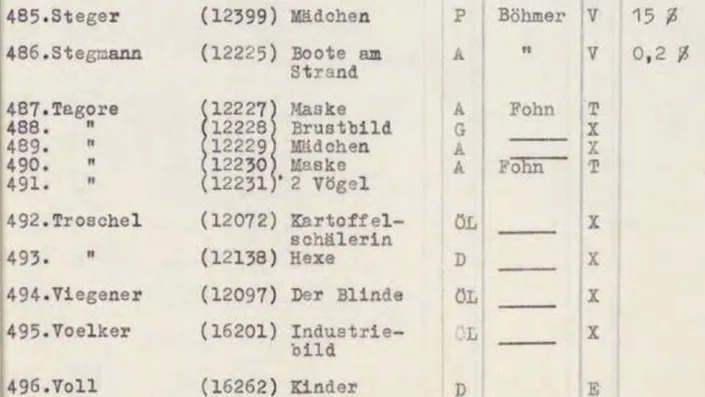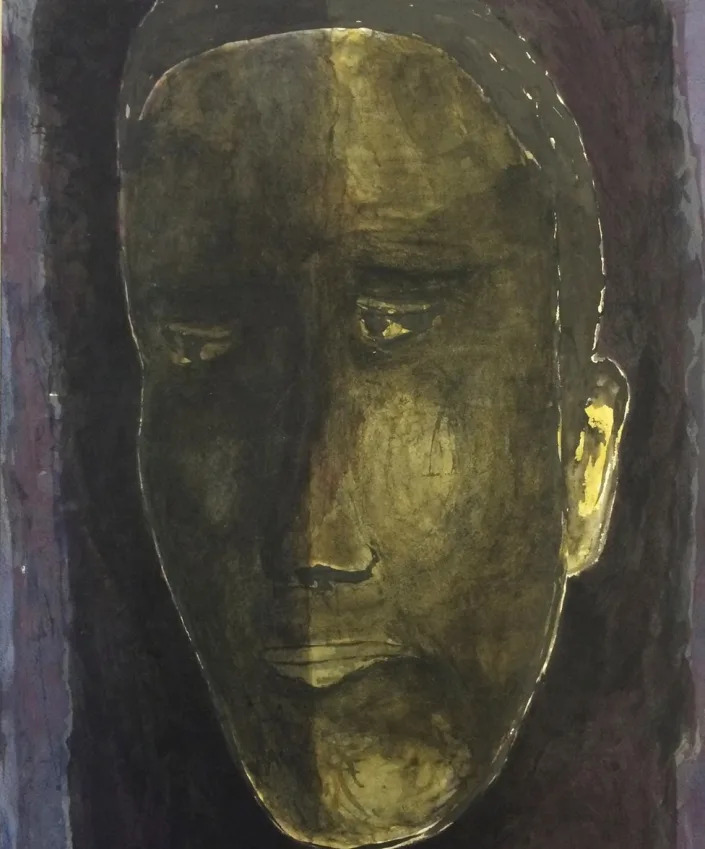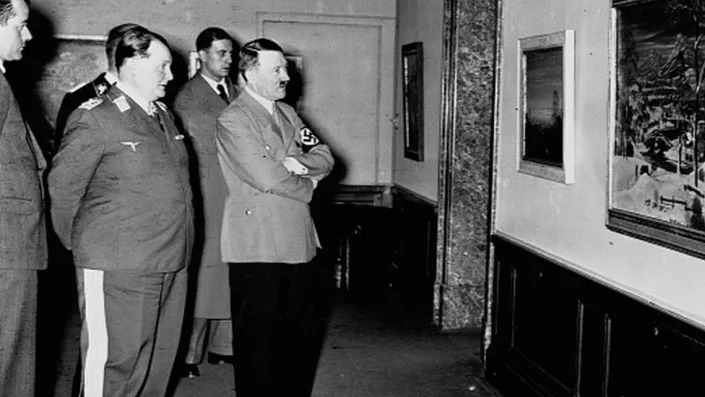Soutik Biswas - India correspondent
Sun, November 20, 2022

Rabindranath Tagore was the first Indian to win a Nobel prize
They were five artworks in all, depicting birds and humans, and one of a girl in a red robe.
Painted in coloured inks and gouache by Rabindranath Tagore, India's most famous poet, they found a place in a leading museum in Berlin. Tagore, the first non-European to win the Nobel literature prize, had gifted the paintings to Germany in 1930.
Seven years later, the paintings were purged by the Nazi regime which had begun to classify some "inappropriate" art works as degenerate.
Hitler, a failed artist himself, believed post-impressionist modern art to be "evidence of a deranged mind" and ordered more than 16,000 artworks, including ones by Van Gogh and Man Ray, to be removed from German museums.
The Nazis considered such art "degenerate" and even staged an exhibition to ridicule them.
Degenerate art: The art the Nazis hated
There appears to be scant record of how and why Tagore's paintings were targeted in a notorious campaign by Hitler. Art historians speculate that it was easy for the Nazis to demonise his art because they were modernist by nature - Hitler once said that "anyone who sees and paints the sky green and fields blue ought to be sterilised".
Tagore visited Germany thrice - in 1921, 1926 and 1930. Two dozen of his books were already available in German translation. "Wherever he spoke, the halls were packed. The newspapers reported scuffles and regular fights by people who were refused entry," says Martin Kampchen, a German author who has translated Tagore's works. The local media hailed the Indian poet as the 'wise man from the East'; and a 'prophet, a mystic and a messiah'.
In 1930, a solo show carrying some 300 of Tagore's artworks travelled to Europe. More than 100 of his paintings were shown in Paris, and at least half of them at the National Gallery of Art in Berlin before the exhibition proceeded to London.

Five of Tagore's paintings are listed in a German inventory of 'degenerate art'
Until 1937, Tagore's paintings were housed in Berlin's baroque Crown Prince Palace, which also housed the National Gallery. When Hitler's purge began, a "deportation list from 15 October 1937 shows the five paintings listed amongst those of many famous expressionist painters which were removed from the palace and brought to a depot with restricted access in the city", according to art historian Konstantin Wenzlaff.
What exactly happened next still remains unclear.
A "degenerate art" inventory compiled in 1941-42 - later widely used to identify the provenance of paintings that went missing during the Nazi era - clearly lists the five paintings, loosely titled Mask, Portrait, Girl [in a red robe], Mask and Two Birds.
In pictures: Long-lost art unveiled in Germany
The confiscated works were listed alphabetically by artist and used symbols such as T (for exchanged), V (for sold) and X (for destroyed) for information on each painting.
In the case of Tagore, the inventory lists two paintings as exchanged and two as destroyed. The fifth one, Two Birds, was untagged in the list.

One of the purged paintings is housed in a museum in Munich, according to a German curator
Mr Wenzlaff has written that Tagore's works "disappeared" from the gallery and "have not been recovered so far".
Three paintings were to be returned to Tagore in 1939 - a letter from the Reich Ministry of Public Enlightenment and Propaganda apparently inquired about the exact address of the poet's heirs, even though he was alive at that time.
Art historian R Siva Kumar, who has researched Tagore's artworks extensively, believes that these three paintings were returned to Tagore in 1939 and the remaining two were lost.
The Nazi art hoard that shocked the world
But Oliver Kase, the chief curator of modern art at Munich's Pinakothek der Moderne museum, told me that one of the two paintings believed to be lost has been in the collection of The Bavarian State Painting Collections in the city since 1964.
Dr Kase describes the painting of a "half-shadowed head" as both "austere and dreamily spiritual" and an example of what was branded as "degenerate art" by the Nazis.
"I believe that is the only work by Tagore in a German public collection," Dr Kase says. The second painting was sold in an auction in October 1996 to a private collector in the UK, he adds.
"The three remaining works that were returned to Tagore [in India] are lost."

Hermann Goering and Adolph Hitler at an exhibition of 'degenerate art' put together by the Nazi party
Prof Siva Kumar believes he "might have seen one of the returned paintings" in the archives at Visva-Bharati, the university founded by Tagore in West Bengal's Shantiniketan town. Nilanjan Bandopadhyay, who runs the archive, told me that he does not know of this painting "off hand, and some visual reference would help".
Tagore began painting in his mid-sixties and ended up producing more than 2,300 artworks over a decade before he died in 1941.
"He always wanted to paint. He was doodling in his manuscripts. Around 1928, he was producing his first paintings," says Professor Siva Kumar.
The prodigious Bengali polymath - poet, novelist, teacher, philosopher, composer - drew imaginary animal figures, geometric patterns, female figures, self-portraits, landscapes and masks that looked like real people. Art historians believe Tagore's art was informed by his widespread exposure to Art Nouveau - the first self-consciously international modern art movement - and the more expressive ancient folk arts.
"What he did was to bring an idea of freedom into his art in India. In the 1930s US and UK had not yet warmed up to modern art. When Tagore was shown in Germany people compared his work to surrealists and expressionists," says Prof Siva Kumar. Until they were purged by the Nazis.
No comments:
Post a Comment